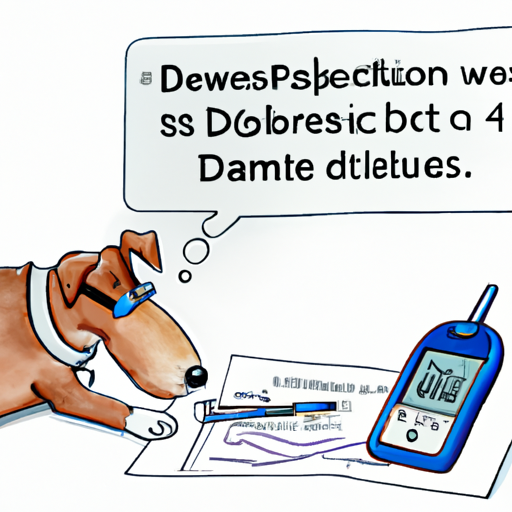As a caregiver to your furry friend, it’s crucial for you to be aware of the signs of diabetes in dogs. Diabetes is a chronic disease that can affect dogs just like it can affect humans. Recognizing the symptoms early on can lead to more effective management and a better quality of life for your pet.
Understanding What is Diabetes in Dogs
Diabetes in dogs is a complex disease caused by either a lack of insulin or an inadequate response to insulin. After a dog eats, its digestive system breaks food into various components, including glucose—which is carried into the cells by insulin, a hormone secreted by the pancreas. When a dog does not produce insulin or cannot utilize it normally, its blood sugar levels elevate. The result is hyperglycemia, which, if left untreated, can cause many complicated health problems for a dog.
Identifying the Early Symptoms
The early signs of diabetes in dogs are often subtle and can be easily overlooked. Here are some of the most common symptoms to watch out for:
- Excessive Thirst: Dogs with diabetes often become very thirsty and will drink more water than usual.
- Increased Urination: As a result of drinking more, they may also urinate more frequently.
- Weight Loss Despite Increased Appetite: Dogs with diabetes may eat more than usual but still lose weight.
- Lethargy: They may also seem more tired than usual.
Recognizing the Advanced Symptoms
If left untreated, diabetes can lead to more severe symptoms. Here are some of the advanced symptoms:
- Recurring infections: Dogs with diabetes are more susceptible to infections.
- Cloudy Eyes: Cataracts may develop quickly in dogs with diabetes.
- Coat Changes: Dogs may have a dull, dry, or thinning coat.
- Vomiting or Diarrhea: These can be signs of ketoacidosis, a life-threatening condition.
When to Consult a Vet
If you notice any of these signs in your dog, it’s crucial to consult a vet immediately. Early diagnosis and treatment can help manage diabetes and prevent complications.
Diagnosis and Treatment
Your vet will perform a complete physical exam and conduct several tests, including blood and urine tests, to diagnose diabetes.
| Test | Purpose |
|---|---|
| Blood Test | To check the blood glucose levels |
| Urine Test | To check for the presence of glucose or ketones |
Once diagnosed, the treatment for diabetes in dogs typically involves insulin injections, dietary changes, and regular monitoring of blood glucose levels.
Managing Diabetes
Managing diabetes in dogs involves regular veterinary care and some lifestyle changes. These may include:
- Feeding a balanced diet: A diet high in fiber and complex carbohydrates can help control blood sugar levels.
- Regular Exercise: Regular exercise can help your dog maintain a healthy weight, which can help control diabetes.
- Regular Vet Check-ups: Regular check-ups will help monitor your dog’s health and adjust treatment as necessary.
FAQ
Q: Can diabetes in dogs be cured?
A: No, there isn’t a cure for diabetes in dogs. However, with proper management and care, dogs with diabetes can live a healthy and happy life.
Q: How common is diabetes in dogs?
A: Diabetes is quite common in dogs. It is estimated that 1 in 500 dogs are diagnosed with diabetes.
Q: Is there a specific breed that is more prone to diabetes?
A: Diabetes can affect any breed of dog. However, some breeds such as Golden Retrievers, German Shepherds, and Poodles have a higher risk.
Q: Can diabetes lead to other health problems in dogs?
A: Yes, if left untreated, diabetes can lead to various health problems in dogs, including kidney disease, liver disease, and cataracts.
As a caregiver, understanding the signs of diabetes in dogs is the first step in ensuring your pet’s health and happiness. If you notice any of the symptoms, don’t hesitate to consult your vet. Your furry friend is relying on you to help them lead a healthy and comfortable life.



